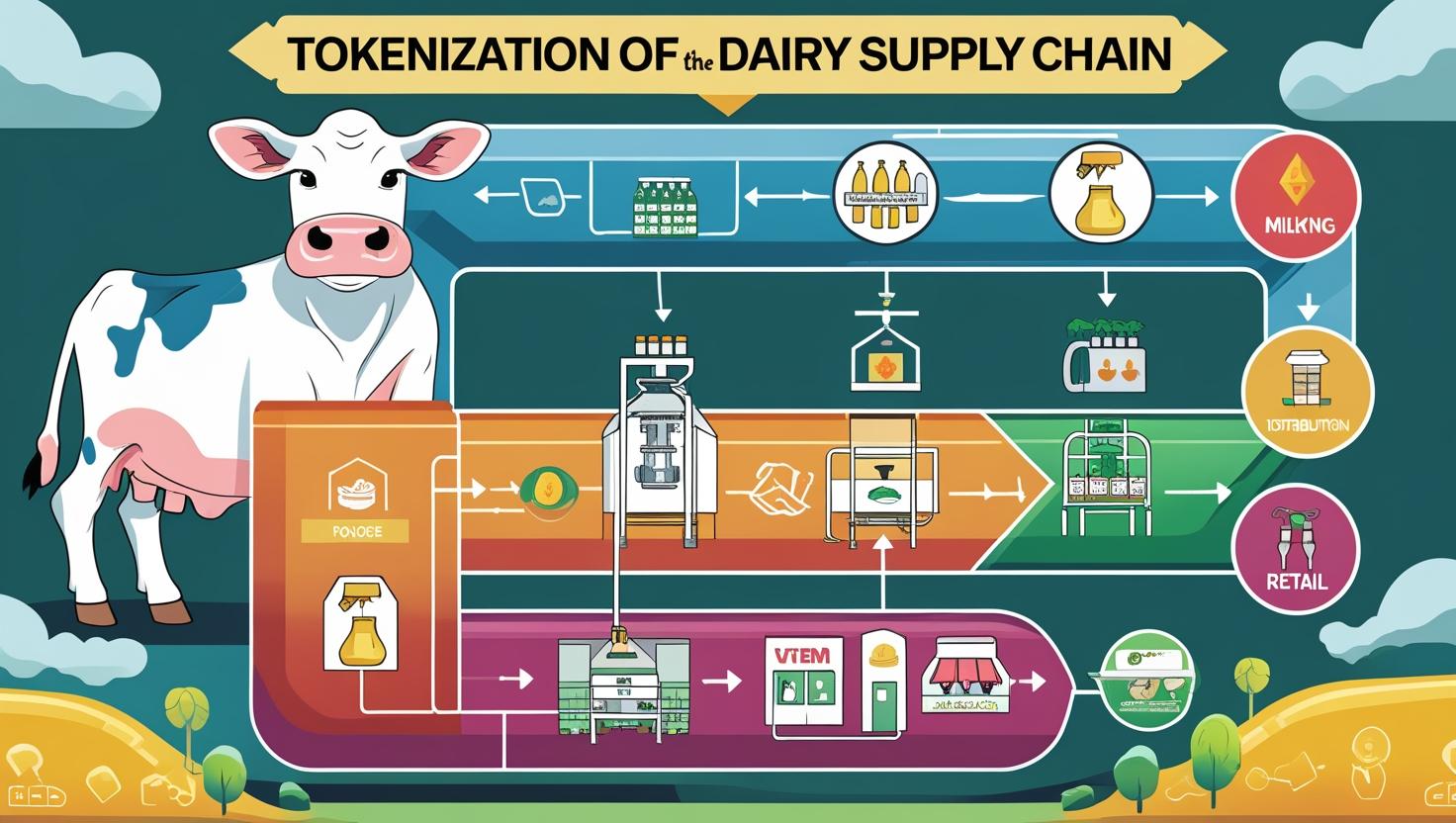
The world of dairy production has remained relatively unchanged for decades—until now. With the rise of tokenized dairy supply chains, we’re witnessing a massive shift in how milk, cheese, and other dairy products travel from farms to our refrigerators. This transformation is powered by a unique marriage of blockchain, IoT (Internet of Things), and real-time data analytics, bringing transparency, efficiency, and trust to an industry that affects billions daily.
Tokenization refers to the process of creating a digital twin for every unit of milk, cheese, or butter. These tokens carry immutable information—from the cow’s health to the temperature of storage containers. This might sound futuristic, but it's already here—and changing lives.
As we dive into the mechanisms behind this disruptive technology, you’ll discover how tokenized tracking can revolutionize food safety, empower farmers, and satisfy eco-conscious consumers.
Dairy tokenization specifically applies blockchain tech and asset tokenization to dairy products. Imagine every bottle of milk or block of cheese tagged with a unique digital ID. That token holds data—who produced it, where, when, how it was transported, its temperature, and more.
Thanks to tokenized systems, anyone—be it regulators, retailers, or customers—can scan a QR code on the packaging and trace its journey back to the exact cow. Yup, that’s possible today.
Let’s talk about the star of the show: real-time tracking. With sensors and smart contracts connected via IoT devices, data flows continuously from source to shelf.
For example:
This entire trail is tokenized and stored securely. Any deviation—say, a spike in temperature—can trigger instant alerts and automatic audits. This isn’t just cool tech; it’s revolutionizing food safety.
Here are a few key numbers that underline just how impactful tokenization is becoming:
That case study is a shining example of how dairy tokenization works in the real world—making it easier to verify product origin, batch quality, and safety standards.
Let’s sum up the game-changing benefits of this new supply chain model:
Consumers can verify every step—right from cow to carton.
Smart contracts automate record-keeping, reducing fraud and human error.
Carbon emissions, packaging impact, and ethical sourcing can be tracked and verified via tokens.
Track in/out flows of products in warehouses and retail locations, minimizing waste and overstock.
Rapid detection of contamination risks and swift recalls prevent large-scale issues.
Let’s walk through a quick example of how tokenized dairy supply chains function in real time:
Q1: What is dairy tokenization?
It’s the process of assigning digital tokens to each stage in the dairy supply chain using blockchain, enabling real-time data tracking and transparency.
Q2: Why is asset tokenization important in dairy?
It helps in maintaining quality, improving food safety, and building consumer trust by digitizing and verifying the journey of dairy products.
Q3: How does blockchain ensure dairy traceability?
Each step in the supply chain is recorded immutably, allowing for transparent, tamper-proof records accessible to all stakeholders.
Q4: Is real-time tracking really feasible in rural dairy zones?
Yes! With IoT devices becoming more affordable and internet connectivity expanding, even rural farmers can plug into blockchain ecosystems.
The rise of tokenized dairy supply chains signals a transformative era. With asset tokenization at the core, it’s not just about tracking products—it’s about trust, efficiency, and empowering both producers and consumers.
And as this technology becomes more mainstream, expect smarter supply chains, fewer food safety scandals, and higher consumer confidence. Want a real-world look at it in action? Check out Spydra’s excellent dairy traceability case study here.